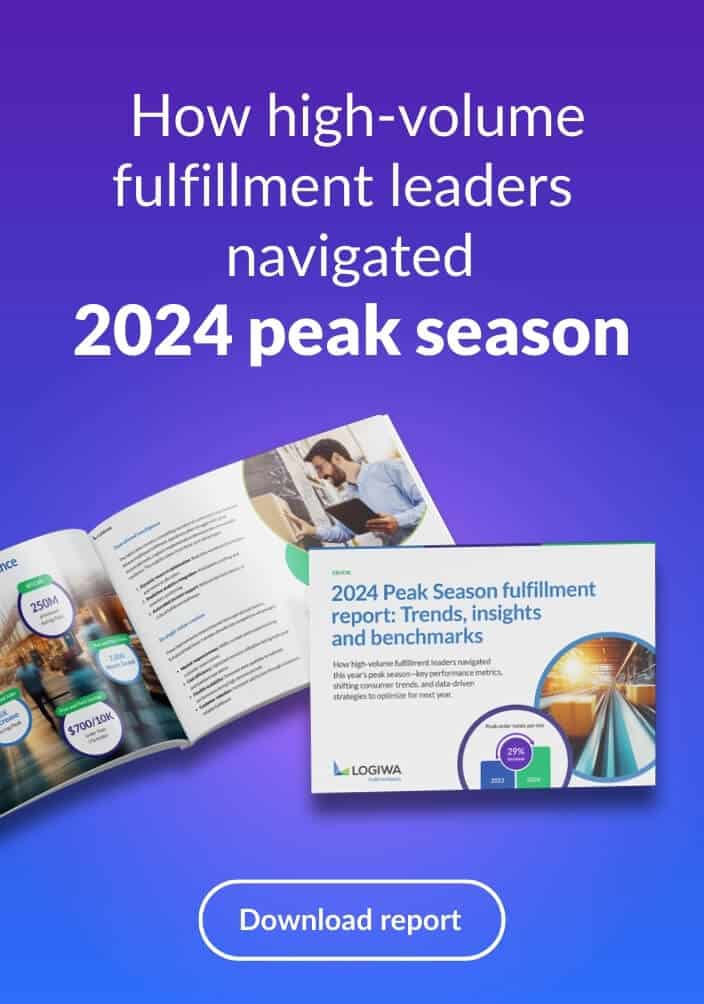For multi-channel retailers, the holiday season within the fourth quarter is the single most important sales period of the year. Multi-channel retailers make almost 40% of their annual sales in the fourth quarter. The majority of these sales occur in a six-week period between November 1st and December 15th. Now that the latest holiday season is over, it’s more important than ever to begin planning for next year. That’s why getting well-prepared for the holiday season and optimizing inventory not to run out-of-stock in the middle of the season is the most crucial task that retailers can do for their business.
From an inventory management perspective, the holiday season is a perfect storm of challenges from extremely high demand and a short sales period to relatively long vendor lead times. On top of that, you’ve got to worry about preventing tying up your money in excess inventory, overloading your freight and shipment services supply, and over-stressing your warehousing and fulfillment staff.
So many things can go wrong in one month that it might seem like you are navigating through an inventory minefield! After spending so much time preparing and executing marketing, sourcing, merchandising and operations plans, it can be a huge letdown to discover there’s not enough inventory left to serve the demand. Making sure you make the right inventory management decisions in the fourth quarter can take your business from mediocre to extreme success.
One of the most targeted tasks you can do to prepare for the next holiday season is optimize your inventory. Here are our top four ways to optimize your inventory for next year’s holiday rush:
Contents
Accurate Demand Forecasting
Ultimately, effective inventory management relies on accurate demand predictions. We can’t know what quantity of an item we need to keep in stock without knowing our future sales predicted levels. Accurate demand forecasting is the best solution to this problem.
Accurately forecasting demand and adjusting reorder quantities is the first step to having a successful holiday season. For effective demand forecasting, specific tools should be used that can compare lead times for your products and readjust reorder quantities accordingly.
demand forecasting tools like those included in an inventory management system analyze past sales data for each product to give an accurate demand forecast of each product in our inventory. Specific attributes, such as seasonality, past holiday demand, and marketing campaigns are used to forecast demand.
Syncing Product Advertising With Demand Forecasting
There are many aspects of a business that can affect the future sales of a given product. The trends within the market itself play a large role. The growth of your company also provides insight into future sales. However, there are many decisions that are made on a day-to-day basis that can result in fluctuating sales.
For example, listing a product on your homepage can result in a sharp spike in sales as opposed to burying it in its listed category. It is vital to coordinate your marketing promotions with inventory management staff to ensure your inventory can handle the influx of sales. This helps you focus on advertising products that have the biggest positive impact on your business.
Retailers that take this into account can expect their inventory management to be more efficient. Product advertising should take stock levels and turnover rates into account. Retailers who couple these two functions have a better chance to find optimal inventory balance.
Today there are more tools than ever to help online retailers with demand forecasting and inventory optimization. Many retailers opt to automate the process entirely through an inventory management system. This is because it can provide more accurate results than trying to establish it by hand.
Syncing Order Scheduling with Demand Forecasting
Forecasting can only get you so far with holiday prep, especially when you forget to forecast the most obvious hurdle; when your supplier goes on vacation. You should make sure that they can fulfill your orders on-time before they take their own holiday time off. Otherwise, they won’t have time to receive products into our warehouse or ship them to 3PL warehouses or Amazon FBA. The best way to do that? Factor in deadlines into your demand forecasting.
Make sure to build schedules for three different parameters for each supplier: vendor, warehouse, or product. For example, when you create a vendor order schedule, you should be able to include or exclude specific order dates. By building this schedule and assigning it to the items that you order from that specific vendor, you can adjust future holiday-based orders. You should also be able to adjust the reorder quantity to cover the time when your supplier is out and open the purchase order early enough for your vendor to ship it.
You should also create a schedule for when you can receive orders and ship to Amazon FBA. For example, assume your company takes time off during the holidays. Amazon FBA has deadlines to have the products at their warehouse dock in order to ship on time. You can make sure to exclude those dates from your schedule. When you set the date for reordering, you should set it far enough in advance so that you receive the purchase orders early, and thus have the stock available for sale.
This is not an easy task, and balancing everyone’s schedules against your own can be very time-consuming. That’s why many inventory optimization software tools offer the functionality to automate scheduling and synchronize it with demand forecasting.
Maintaining Customer Service Success
Holidays can satisfy or totally damage your customer service levels. Your business ensures reliability and loyalty as soon as you prove that you know what your customers want. Keeping up this level of high customer service success can be difficult during the holiday season. After all, years of reliable and on-time order fulfillment may build up a loyal customer, but it only takes one unfulfilled order to destroy that loyalty.
It is more important than ever to go above and beyond with customer service during the holiday season. To do so, you need to make sure you have everything, and that it will be on-time. Optimizing your inventory and scheduling our purchase orders with vendors will help you find our way out of the chaos, and will take the edge off the holiday rush.
Unlock a personalized tour of Logiwa IO
Related Terms
Still not ready for peak season? Prepare for the challenges of the crazy shopping season with this guide.
Supplier relationship management
Supplier relationship management can help improve your supply chain operations and overall success through coordination and collaboration. Learn more in this guide.
UPS Next Day Air Saver is an inexpensive, yet effective way to ship objects fast and ensure timely deliveries. Learn how to bypass costly delays in this article by Logiwa
With FedEx Drop-off, you can easily pick up and drop off packages near you. But is it really as easy as it sounds?
The final hurdle in successful order fulfillment is the domain of the Last Mile Carrier. This article from Logiwa will shed light on this vital role in our supply chain.
Expedited shipping is fast becoming the expectation in online retail. This article from Logiwa provides a behind-the-scenes look at this new normal.





